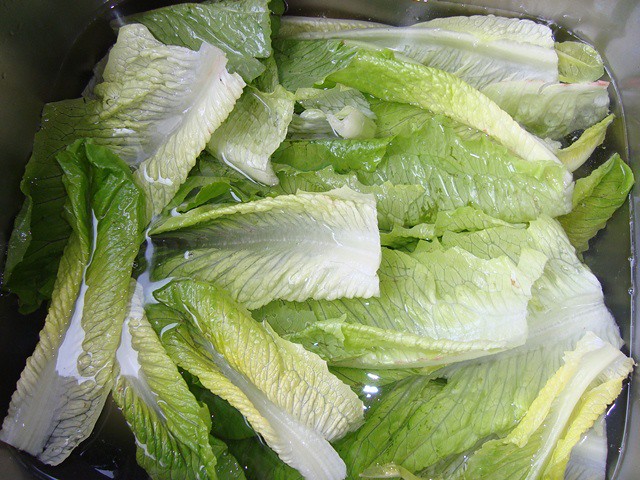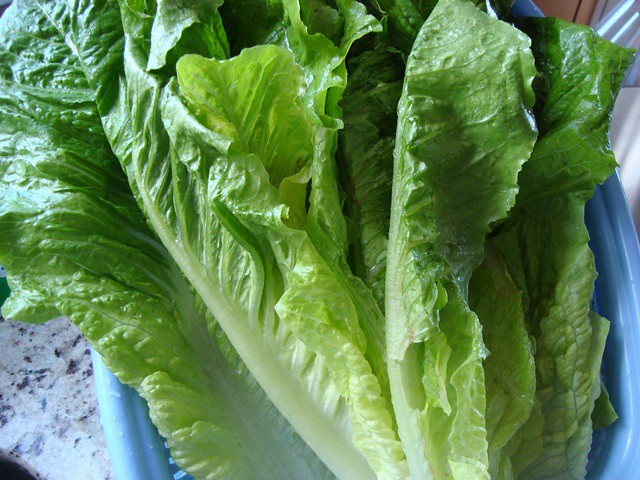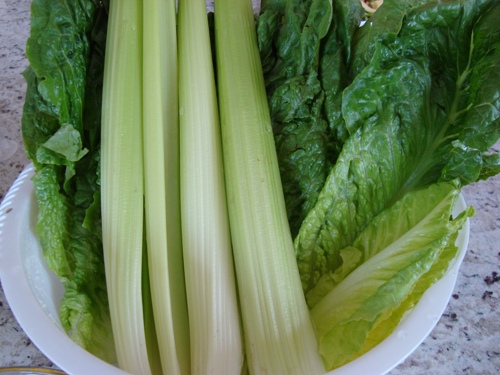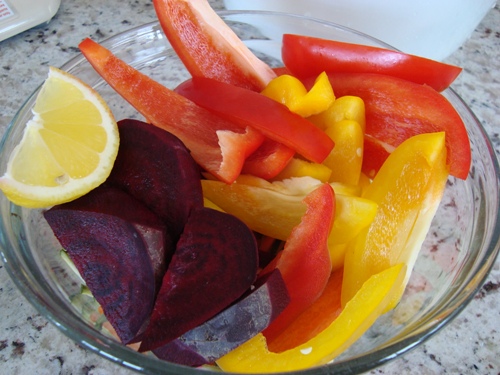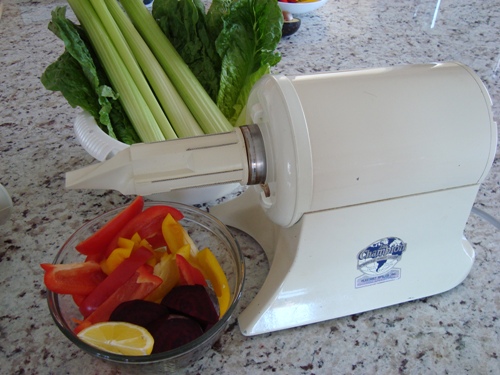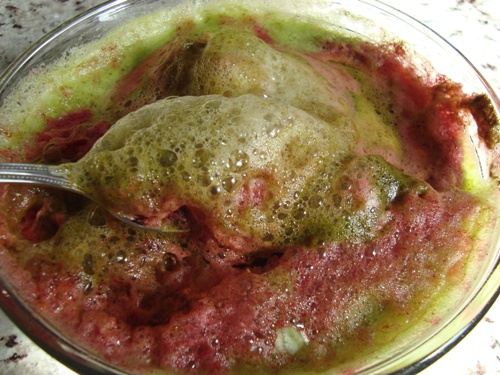
This is interesting. After reading this, you’ll never look at a banana in the same way again.
Bananas contain three natural sugars – sucrose, fructose and glucose combined with fiber. A banana gives an instant, sustained and substantial boost of energy.
Research has proven that just two bananas provide enough energy for a strenuous 90-minute workout. No wonder the banana is the number one fruit with the world’s leading athletes.
But energy isn’t the only way a banana can help us keep fit. It can also help overcome or prevent a substantial number of illnesses and conditions, making it a must to add to our daily diet.
Research has proven that just two bananas provide enough energy for a strenuous 90-minute workout. No wonder the banana is the number one fruit with the world’s leading athletes.
But energy isn’t the only way a banana can help us keep fit. It can also help overcome or prevent a substantial number of illnesses and conditions, making it a must to add to our daily diet.
DEPRESSION
According to a recent survey undertaken by MIND amongst people suffering from depression, many felt much better after eating a banana. This is because bananas contain tryptophan, a type of protein that the body converts into serotonin, known to make you relax, improve your mood and generally make you feel happier.
PMS:
Forget the pills – eat a banana. The vitamin B6 it contains regulates blood glucose levels, which can affect your mood.
According to a recent survey undertaken by MIND amongst people suffering from depression, many felt much better after eating a banana. This is because bananas contain tryptophan, a type of protein that the body converts into serotonin, known to make you relax, improve your mood and generally make you feel happier.
PMS:
Forget the pills – eat a banana. The vitamin B6 it contains regulates blood glucose levels, which can affect your mood.
ANEMIA
High in iron, bananas can stimulate the production of hemoglobin in the blood and so helps in cases of anemia.
BLOOD PRESSURE:
This unique tropical fruit is extremely high in potassium yet low in salt, making it perfect to beat blood pressure So much so, the US Food and Drug Administration has just allowed the banana industry to make official claims for the fruit’s ability to reduce the risk of blood pressure and stroke.
High in iron, bananas can stimulate the production of hemoglobin in the blood and so helps in cases of anemia.
BLOOD PRESSURE:
This unique tropical fruit is extremely high in potassium yet low in salt, making it perfect to beat blood pressure So much so, the US Food and Drug Administration has just allowed the banana industry to make official claims for the fruit’s ability to reduce the risk of blood pressure and stroke.
BRAIN POWER
200 students at a Twickenham school ( England ) were helped through their exams this year by eating bananas at breakfast, break, and lunch in a bid to boost their brain power. Research has shown that the potassium-packed fruit can assist learning by making pupils more alert.
200 students at a Twickenham school ( England ) were helped through their exams this year by eating bananas at breakfast, break, and lunch in a bid to boost their brain power. Research has shown that the potassium-packed fruit can assist learning by making pupils more alert.
CONSTIPATION
High in fiber, including bananas in the diet can help restore normal bowel action, helping to overcome the problem without resorting to laxatives.
High in fiber, including bananas in the diet can help restore normal bowel action, helping to overcome the problem without resorting to laxatives.
HANGOVERS
One of the quickest ways of curing a hangover is to make a banana milkshake, sweetened with honey. The banana calms the stomach and, with the help of the honey, builds up depleted blood sugar levels, while the milk soothes and re-hydrates your system.
One of the quickest ways of curing a hangover is to make a banana milkshake, sweetened with honey. The banana calms the stomach and, with the help of the honey, builds up depleted blood sugar levels, while the milk soothes and re-hydrates your system.
HEARTBURN
Bananas have a natural antacid effect in the body, so if you suffer from heartburn, try eating a banana for soothing relief.
Bananas have a natural antacid effect in the body, so if you suffer from heartburn, try eating a banana for soothing relief.
MORNING SICKNESS
Snacking on bananas between meals helps to keep blood sugar levels up and avoid morning sickness.
MOSQUITO BITES:
Before reaching for the insect bite cream, try rubbing the affected area with the inside of a banana skin. Many people find it amazingly successful at reducing swelling and irritation.
Snacking on bananas between meals helps to keep blood sugar levels up and avoid morning sickness.
MOSQUITO BITES:
Before reaching for the insect bite cream, try rubbing the affected area with the inside of a banana skin. Many people find it amazingly successful at reducing swelling and irritation.
NERVES
Bananas are high in B vitamins that help calm the nervous system..
Overweight and at work? Studies at the Institute of Psychology in Austria found pressure at work leads to gorging on comfort foodlike chocolate and chips. Looking at 5,000 hospital patients, researchers found the most obese were more likely to be in high-pressure jobs. The report concluded that, to avoid panic-induced food cravings, we need to control our blood sugar levels by snacking on high carbohydrate foods every two hours to keep levels steady.
Bananas are high in B vitamins that help calm the nervous system..
Overweight and at work? Studies at the Institute of Psychology in Austria found pressure at work leads to gorging on comfort foodlike chocolate and chips. Looking at 5,000 hospital patients, researchers found the most obese were more likely to be in high-pressure jobs. The report concluded that, to avoid panic-induced food cravings, we need to control our blood sugar levels by snacking on high carbohydrate foods every two hours to keep levels steady.
ULCERS
The banana is used as the dietary food against intestinal disorders because of its soft texture and smoothness. It is the only raw fruit that can be eaten without distress in over-chroniclercases. It also neutralizes over-acidity and reduces irritation by coating the lining of the stomach.
The banana is used as the dietary food against intestinal disorders because of its soft texture and smoothness. It is the only raw fruit that can be eaten without distress in over-chroniclercases. It also neutralizes over-acidity and reduces irritation by coating the lining of the stomach.
TEMPERATURE CONTROL
Many other cultures see bananas as a ‘cooling’ fruit that can lower both the physical and emotional temperature of expectant mothers. In Thailand , for example, pregnant women eat bananas to ensure their baby is born with a cool temperature.
So, a banana really is a natural remedy for many ills. When you compare it to an apple, it has FOUR TIMES the protein, TWICE the carbohydrate, THREE TIMES the phosphorus, five times the vitamin A and iron, and twice the other vitamins and minerals.. It is also rich in potassium and is one of the best value foods around So maybe its time to change that well-known phrase so that we say, ‘A BANANA a day keeps the doctor away!
Many other cultures see bananas as a ‘cooling’ fruit that can lower both the physical and emotional temperature of expectant mothers. In Thailand , for example, pregnant women eat bananas to ensure their baby is born with a cool temperature.
So, a banana really is a natural remedy for many ills. When you compare it to an apple, it has FOUR TIMES the protein, TWICE the carbohydrate, THREE TIMES the phosphorus, five times the vitamin A and iron, and twice the other vitamins and minerals.. It is also rich in potassium and is one of the best value foods around So maybe its time to change that well-known phrase so that we say, ‘A BANANA a day keeps the doctor away!

 Travelling is fun! And most people would love to simply embark on a journey without a strict plan in place. But there are a few things that can put a dent in your adventure, one of them is the sudden onset of cough. A condition that often strikes when the weather changes abruptly or when you move to a more polluted place, cough can be persistent and be a downer! So, in order to help you stay on your journey, here are some quick tips to keep cough at bay while travelling.
Travelling is fun! And most people would love to simply embark on a journey without a strict plan in place. But there are a few things that can put a dent in your adventure, one of them is the sudden onset of cough. A condition that often strikes when the weather changes abruptly or when you move to a more polluted place, cough can be persistent and be a downer! So, in order to help you stay on your journey, here are some quick tips to keep cough at bay while travelling.
 White Tea – This is the least processed tea. The leaves and buds are carefully picked while they are still young. The fine silver hair on the yet to mature buds gives the tea its name. Drying in the natural sunlight prevents them from oxidation which is sometimes supplemented by lightly baking them in ovens. On being steeped, the tea imparts a pale-yellow appearance and a slight sweet taste to the beverage. White tea contains the same health benefits as the other types but it is particularly rich in anti-oxidants. The Silver Needle and the Darjeeling tea are the most loved (and expensive) varieties amongst White teas.
White Tea – This is the least processed tea. The leaves and buds are carefully picked while they are still young. The fine silver hair on the yet to mature buds gives the tea its name. Drying in the natural sunlight prevents them from oxidation which is sometimes supplemented by lightly baking them in ovens. On being steeped, the tea imparts a pale-yellow appearance and a slight sweet taste to the beverage. White tea contains the same health benefits as the other types but it is particularly rich in anti-oxidants. The Silver Needle and the Darjeeling tea are the most loved (and expensive) varieties amongst White teas. Green Tea – The leaves are harvested in three installments in a year. Known as ‘flushes’, the first flush delivers the best quality among all. Mature leaves are plucked and sorted according to their size and steamed or pan-fried. Care is taken to ensure that the leaves go through minimal oxidation to retain maximum polyphenols and anti-oxidants. The level of caffeine is also less pronounced than it is in Black Tea. This is followed by rolling the leaves in different shapes by hand or machines before they are left to dry and be packed. Green Tea is a particular favorite amongst dieticians and fitness expert as it helps in increasing the metabolism, resulting in weight-loss. It is continually being incorporated into diets, cuisines as well as cosmetics in the recent past.
Green Tea – The leaves are harvested in three installments in a year. Known as ‘flushes’, the first flush delivers the best quality among all. Mature leaves are plucked and sorted according to their size and steamed or pan-fried. Care is taken to ensure that the leaves go through minimal oxidation to retain maximum polyphenols and anti-oxidants. The level of caffeine is also less pronounced than it is in Black Tea. This is followed by rolling the leaves in different shapes by hand or machines before they are left to dry and be packed. Green Tea is a particular favorite amongst dieticians and fitness expert as it helps in increasing the metabolism, resulting in weight-loss. It is continually being incorporated into diets, cuisines as well as cosmetics in the recent past.  Oolong Tea – The leaves are allowed to undergo oxidation from levels ranging from 8% to 85%. Oxidation is then suppresed by allowing the leaves to wither and dry under the strong sun or by directly firing them before being curled and rolled. The colour of the leaves can differ from almost black to dark green. The taste of Oolong teas cover a wide spectrum based on the level of oxidation of the leaves. Ranging from sweet with fruity aromas, to woody with grassy under-notes, the style of production and processing influences the taste. High quality Oolong can be steeped more than once. In fact, it has been found that the taste improves significantly by the 3
Oolong Tea – The leaves are allowed to undergo oxidation from levels ranging from 8% to 85%. Oxidation is then suppresed by allowing the leaves to wither and dry under the strong sun or by directly firing them before being curled and rolled. The colour of the leaves can differ from almost black to dark green. The taste of Oolong teas cover a wide spectrum based on the level of oxidation of the leaves. Ranging from sweet with fruity aromas, to woody with grassy under-notes, the style of production and processing influences the taste. High quality Oolong can be steeped more than once. In fact, it has been found that the taste improves significantly by the 3 Black Tea – Over 90% of all tea sold worldwide, is black. This is primarily because of its ability to retain flavor for years as opposed to green which has a shelf life of a year. This tea goes through the most processing. After picking, the leaves are dried in the sun till they wilt. The leaves are then crushed to expose the tissues to air. The compounds therein react with the air and are allowed to ferment till they are completely oxidized. During this time, the leaves gain their black colour. The temperature and humidity are rigidly controlled according to standardized parameters. After a final bout of drying, the leaves are sorted with respect to leaf size into whole leaves, fannings and dust. Darjeeling, fondly called the ‘Champagne of Teas’ produces the world’s finest black tea, followed by the Anhui province in China.
Black Tea – Over 90% of all tea sold worldwide, is black. This is primarily because of its ability to retain flavor for years as opposed to green which has a shelf life of a year. This tea goes through the most processing. After picking, the leaves are dried in the sun till they wilt. The leaves are then crushed to expose the tissues to air. The compounds therein react with the air and are allowed to ferment till they are completely oxidized. During this time, the leaves gain their black colour. The temperature and humidity are rigidly controlled according to standardized parameters. After a final bout of drying, the leaves are sorted with respect to leaf size into whole leaves, fannings and dust. Darjeeling, fondly called the ‘Champagne of Teas’ produces the world’s finest black tea, followed by the Anhui province in China. Chamomile is a popular herb that’s used in teas worldwide. Chamomile soothes the stomach and relieves bloating and indigestion. Chamomile also calms the mind and helps people relax and deal better with their stresses. Chamomile is known to fight insomnia by relaxing the body and the mind, enabling the person to fall asleep naturally.
Chamomile is a popular herb that’s used in teas worldwide. Chamomile soothes the stomach and relieves bloating and indigestion. Chamomile also calms the mind and helps people relax and deal better with their stresses. Chamomile is known to fight insomnia by relaxing the body and the mind, enabling the person to fall asleep naturally.
 Sweet and juicy to taste, orange is one of the most popular fruits in India as well as the world. Belonging to a group of citrus fruits called hesperedium, oranges have more health benefits than one. Here are the top 10 health benefits of the fruit.
Sweet and juicy to taste, orange is one of the most popular fruits in India as well as the world. Belonging to a group of citrus fruits called hesperedium, oranges have more health benefits than one. Here are the top 10 health benefits of the fruit.

